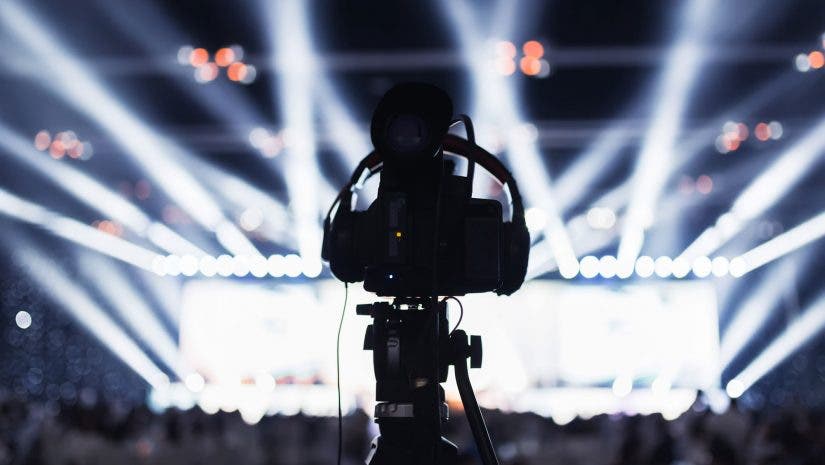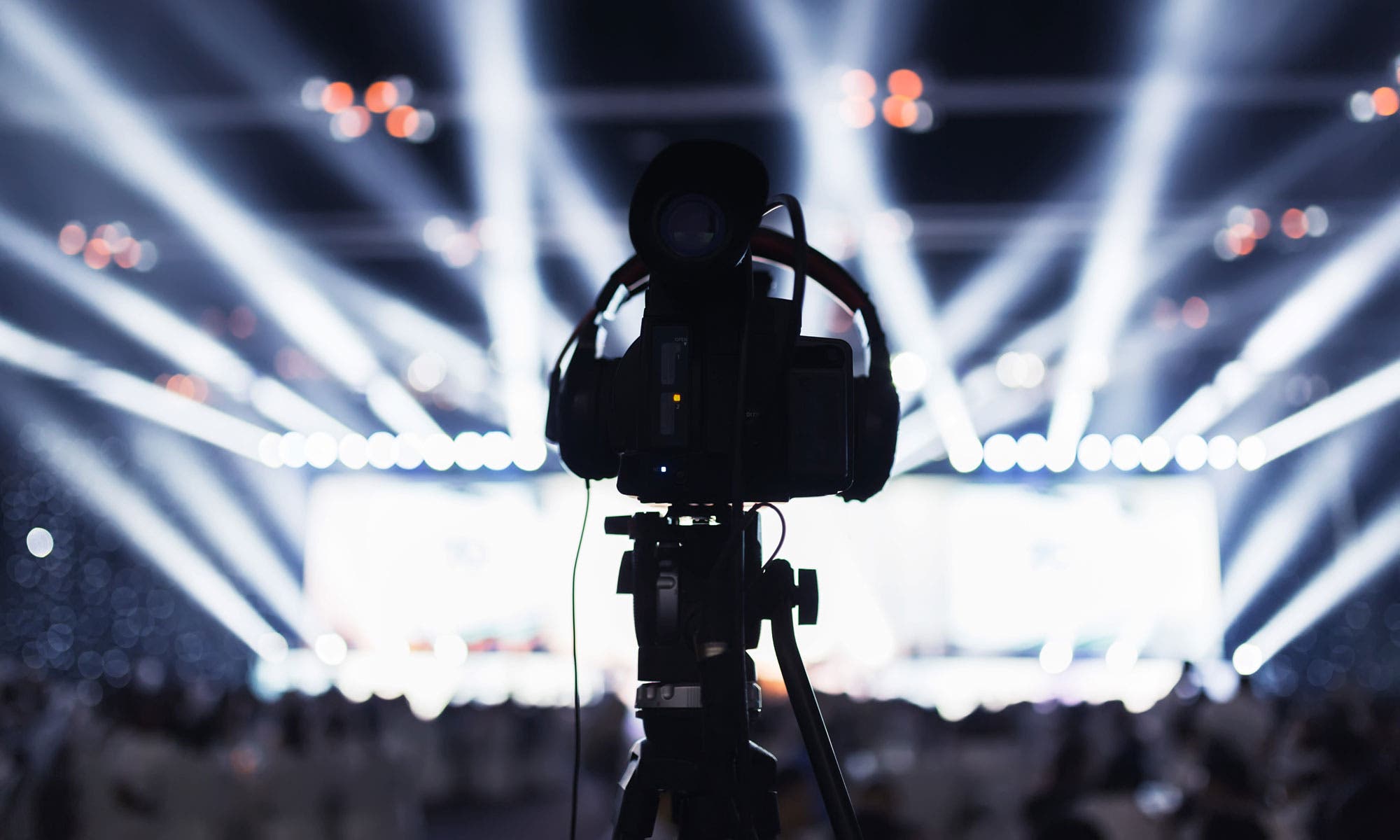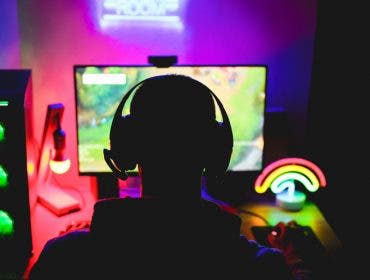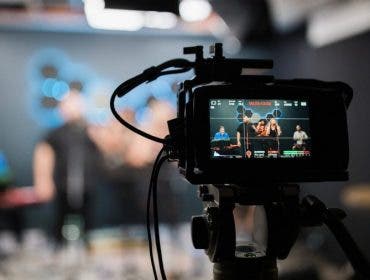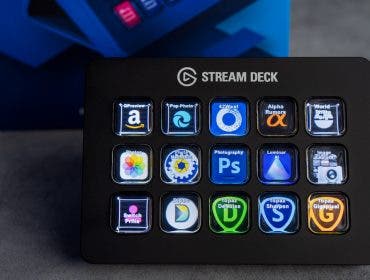Live streaming online is a great way to spread your message, increase brand awareness, and cultivate relationships with fans and followers. For these reasons, an overwhelming amount of people learn how to live stream videos on Facebook, YouTube, and Instagram every day.
Whether you’re a content creator, business, artist, influencer, or even a member of a church or school community looking to broadcast your life, activities, or live events, this article will help you create an ideal streaming setup consisting of different types of live video streaming equipment.
What Equipment Do You Need for Live Streaming?
You can get started with live streaming with a very basic kit, or you can create a more involved setup for a more professional look. Many common social media channels like YouTube, Facebook, Instagram, and Twitch make it easy to create a live stream right from the app. In many cases you’ll only need a cell phone and internet access to get started.
For a level-up in quality, consider adding equipment that adds extra features. You’ll achieve a more consistent look and professional style.

Streaming Equipment Setup for Every Budget and Level
If you’re just starting out with live streams, don’t feel like you need to make a big investment right away. It’s a good idea to research different setups and the kinds of live streams they’re used for before you start shopping. Here are a few common setups to consider:
Entry Level Streaming Equipment: Wi-Fi Camera Setup
- Smartphone, tablet, or webcam
- Tripod (optional)
- Wi-Fi Connection
Ideal For: Video Blogs and Podcasts
The easiest, fastest way to go live is to use equipment that you already have. This basic single camera setup allows you to connect to the internet easily, so you can stream directly to Facebook, Instagram, YouTube, and other social media and video gaming platforms through your installed apps. However, there are certain obvious limitations to this kind of setup, like lower quality videos and plain, continuous recording.
Intermediate Level Streaming Equipment: Single HD Camera Setup
- HD Video Camera or Camcorder
- Tripod
- Video Encoder
- Portable Wi-Fi Device
Ideal For: Video Blogs, Podcasts, Small Seminars and Events
For a more polished-looking stream, consider investing in a professional video camera that captures and streams clearer, higher resolution videos via an encoder (more on this below).
Make sure you go for dedicated video cameras that are designed for extended use as a video camera (DSLRs generally aren’t) but don’t spend thousands on a high-end camcorder either—unless you know how to use them and plan on using it frequently. It’s always best to go for a standalone camera that can record and broadcast your video podcast, indoor vlogs, small seminars, and the like on the web.
If you don’t own a camera yet, check out our picks for the best cameras for live streaming.
Professional Level Streaming Equipment: Multi-Camera Setup
- Multiple HD Video Cameras or Camcorders
- Tripods
- Video Encoder
- Audio Mixer
- Computer Graphics Software
- Portable Wi-Fi Device
Ideal For: Concerts, Church Services, Theater Plays, and Surveillance
For streaming events in larger venues, you’ll need more pieces of video production hardware: more than one HD camera and other devices that will consolidate audio and video signals for broadcast on the web.
Having multiple cameras enable you to capture video from various angles (from afar and up close) for more engaging content. Alternatively, lower quality security cameras (or IP cameras) can be used to cover different angles of a room or parts of a house to provide 24-hour surveillance while you’re away.
What Streaming Accessories Do You Need?
Regardless of the live streaming setup you choose, you’ll need a few key accessories to help create a more seamless and enjoyable experience for your viewers. Here are a few of the accessories that will make your live streams look more professional:
- Lighting: It’s a good idea to have consistent lighting on your face so your audience can see you.
- A background: Whether you’re using a green screen or plan to show your environment, it’s a good idea to have a consistent, non-cluttered background.
- Cables, batteries, etc.: Over time you’ll gather a collection of useful items to keep on hand for a smoother streaming process.
How to Set Up Live Streaming Equipment
The way you set up your equipment will vary significantly depending on what type of live stream you’re creating.
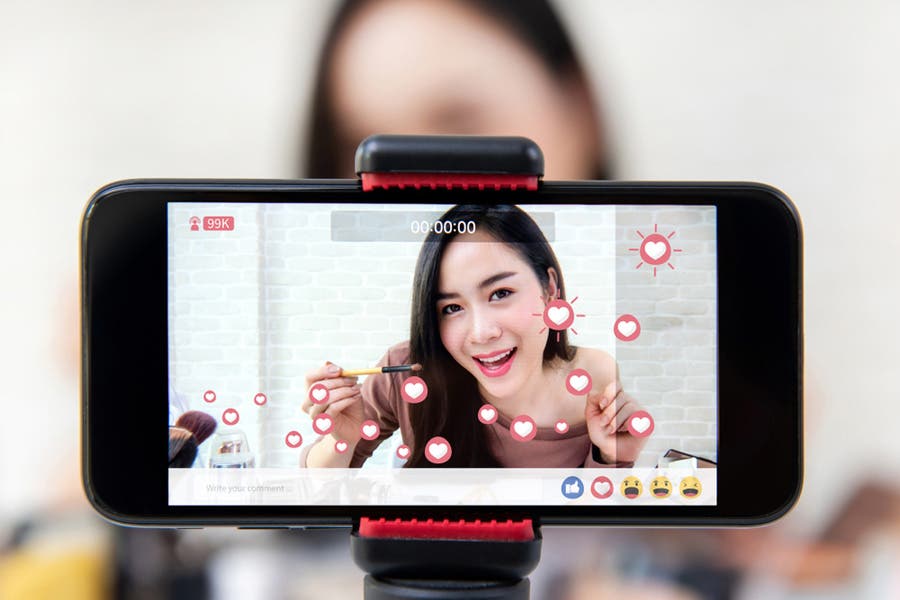
For larger live streams, like concerts and events, choose interesting and dynamic camera locations. Run cables neatly and carefully to protect your equipment and performers.
For smaller scale live streams, like a gameplay stream, it’s often helpful to leave your equipment set up once you find a configuration that works for you. That way you’ll have a consistent look from live stream to live stream and you can stream at will with minimal set up.
Streaming Destination: Where to Stream?
The first thing you need to do is ask yourself what you would like to broadcast live. Is it just a regular daily vlog? A small seminar? A musical concert? Figuring out your specific broadcasting needs will allow you to determine the type of live streaming camera equipment and setup that you should use for best results.
Facebook and Instagram both work well for smaller live vlogs and for talking to your audience informally. For concerts and seminars, YouTube is a great option. Twitch is an emerging platform for streamers.
Invest in tripods
Whether you’re planning a smartphone setup at home or a full event coverage, it really helps to have a sturdy and reliable tripod that will allow you to stream hands-free and ultimately eliminate camera movements that can distract from your content and make your viewers feel dizzy.
Choose the ideal video encoding option
Once you decide to use an actual video camera instead of just your mobile device or webcam, you’ll need an encoding device that will convert your video into digital format for broadcast to the web. You can either get a hardware encoder or a computer with encoding software installed in it.
Just remember that the latter requires an adapter or capture device to connect the camera to your computer.
For single camera setups, the Epiphan Webcaster X2 encoder is a great option for streaming live to Facebook and YouTube, and you can even connect it to your camera or mixer easily via HDMI output. Popular encoders like the Tricaster Mini and the Sony AWS-750 Anycast also double as video switchers, so you or your assistant/video producer can alternate camera feeds for different shots.
Consider getting an audio mixer
Good-quality video is nothing when your sound quality is terrible. In simpler setups, one external microphone connected to your camera may work. But for multiple audio sources, you’ll definitely need a mixer to not only convert audio signals into digital format for broadcasting but to also have control over the volumes and tones of each of those sound sources.
A mixer like the Behringer XENYX 302USB is super handy and provides high-quality audio processing performance. For more options, check out our top picks for audio mixers.
Figure out how you will be adding text and graphics
Remember those opening billboards or special intros that you see during live news telecasts? Those will not be possible without having a software that allows you to incorporate desktop animations, overlays (like picture-in-picture effects), and even lyrics and passages that will improve viewer engagement and the quality of your content.
Get a high-speed internet connection
Video capture is really just half the battle. For a truly successful live stream, you’ll need a WiFi connection that’s not only fast but reliable. Don’t connect to an in-house internet connection that everybody else is using even if it’s super fast. The best option is to use a portable WiFi router that will not go wonky in the middle of your stream.
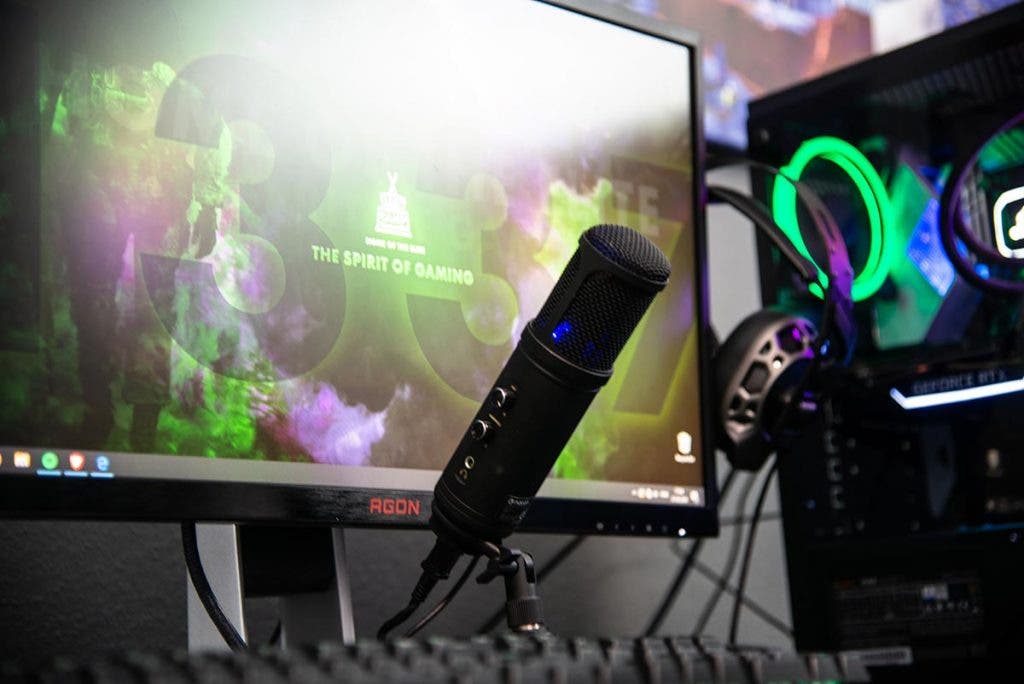
Live Streaming Setup: Frequently Asked Questions
What is the best setup for live streaming?
When it comes to your streaming setup, you want to make sure your audience can hear you and see you clearly. Having a ring light next to your camera will allow the viewers to see you better. You might also consider colorful lights behind you, as it gives your stream some character and pop. Outlining your background with some light strips like this Eve Light Strip or Cavision light strip will greatly enhance your stream.
Depending on where you set up your streaming space, you want to make sure outside noise isn’t coming through. Soundproof your room to eliminate outside noise. Don’t set up near a window as the sounds of cars could make your audio worse.
You also want to make sure you are near your router so your computers have an Ethernet connection. Streaming on Wi-Fi will greatly reduce your stream quality. Having multiple monitors will help considerably as well, so consider a dual monitor setup — a monitor for chat, and a monitor for gameplay.
How do I set up my room for streaming?
Space is key. You don’t want to be too close to the camera, nor do you want to be too far away where people can’t see you. Watch some of your favorite streamers and see how they set up their camera. You can either have your camera at an angle, in front of you, or have a multi-camera setup.
When it comes to microphones, you can either use one that sits on your desk, like a Blue microphone, or an XLR microphone attached to an arm. The Blue microphone will get more room tone, whereas the XLR microphone will be focused more on the voice. Keep in mind if you use an XLR mic, you will need a Focusrite audio interface so you can plug the microphone into your computer. If you plan on streaming games from a console and not from your PC you will need a stream deck. The Elgato HD60 S+ is a great pick.
How many monitors do I need for Streaming? Do you need two PCs to stream?
Two monitors are ideal for streaming. You want to be able to watch and respond to chats while you stream. If you plan to not stream any games, then one monitor should be enough.
When it comes to computers, it depends on your computer specs. If you have a powerful processor that can stream, then only one computer is needed. Some top processors include the AMD Ryzen 9 5900X and the Intel i7-12700k. These chips will allow you to play and stream all on one computer. There is no need to purchase a second computer when you can do it all with one!
Can I stream from a laptop?
In short, yes, you can stream from a laptop! If you find yourself traveling a lot and want to stream on-the-go, a laptop for streaming is a great investment!
One thing to keep in mind when streaming from a laptop is cooling capabilities. With a desktop, you can add multiple fans to help cool down the GPU and CPU. With a laptop, you’re unable to add extra fans, and streaming for multiple hours will increase temperatures. One amazing laptop for streaming is the Asus ROG Zephyrus Duo SE. This beast of a laptop will be able to handle the streams you throw at it! If space is hard to come by and you want to have the option of streaming on the go, a laptop is a great investment.
